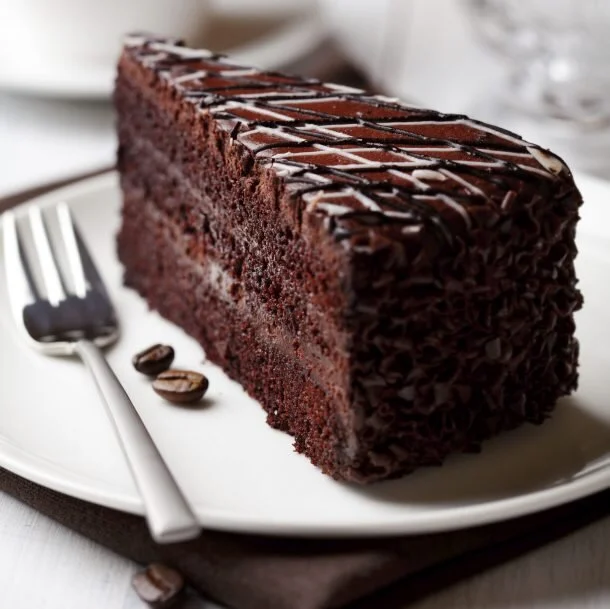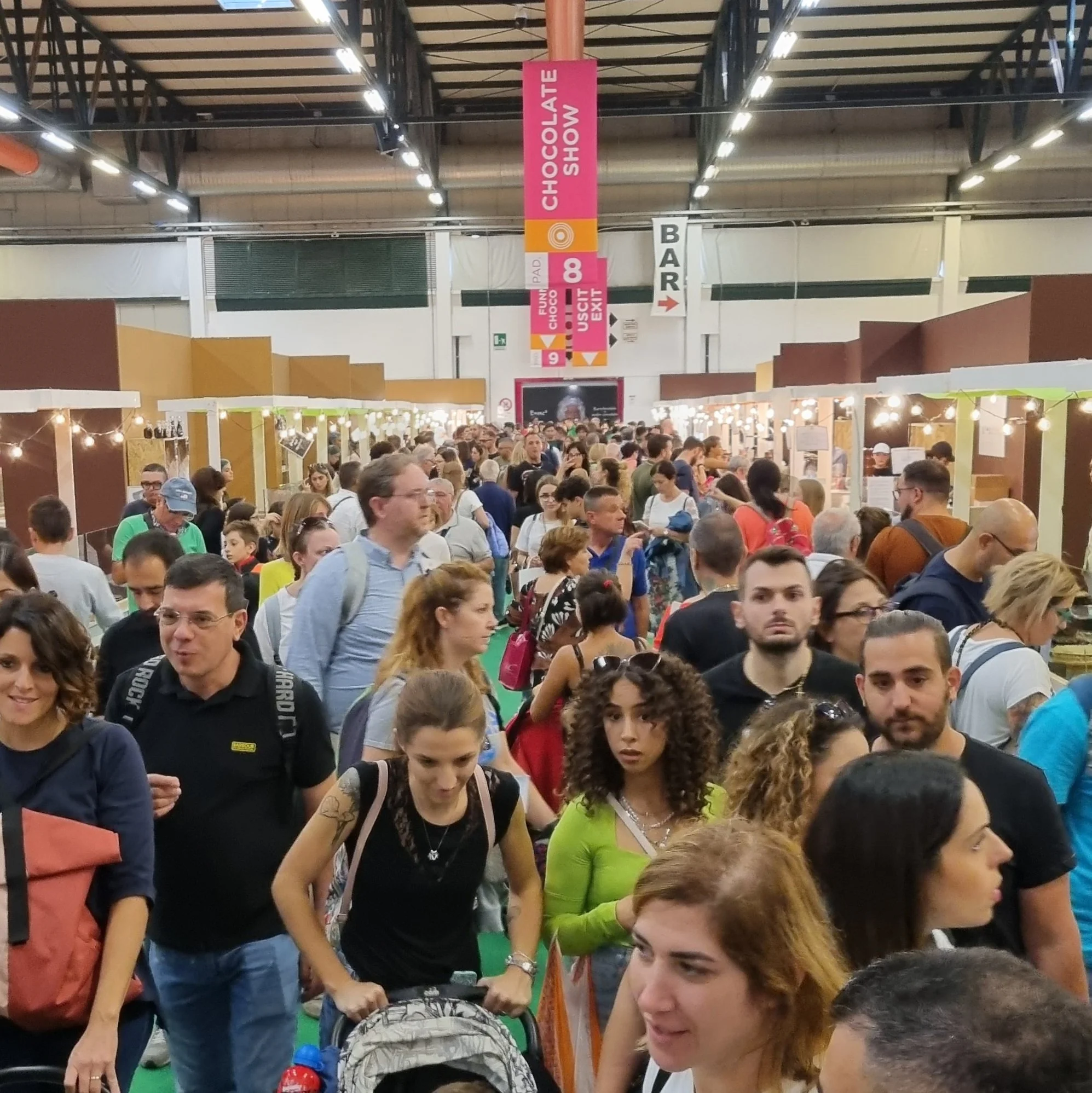Craft Chocolate Couverture: A New Profitable Market?
Summer might be over, but chocolate professionals are still pondering over the hot topics discussed at the Fine Chocolate Industry Association event held in New York City on June 30th, 2018.
More than 250 participants filled the conference rooms of the Crown Plaza Hotel in Times Square, Manhattan. Cocoa producers, chocolate makers, distributors, retailers, experts and professors joined forces to discover the latest trends in the industry and discuss new opportunities and threats. From "Fat and Astringency in Chocolate Mouthfeel" to "How To Talk To The Media", the topics covered a wide range of interests. But there was one specific subject that stood out and captured the attention of all attendees: craft chocolate couverture.
Can craft chocolate couverture steal the hearts of dessert professionals?
More specifically, it was discussed how craft chocolate couverture could attract the attention of pastry chefs and chocolatiers. These professionals are in fact putting more attention than ever towards the quality and the storytelling of the raw materials they buy. On one side, demanding consumers ask for transparency and quality. On the other side, dessert professionals feel the pressure of providing products with a story, high-quality and a transparent supply chain.
Seems like the best opportunity for craft chocolate makers, right?
Also at the Fancy Food Show held at the Javits Center in New York City this past summer, many chocolate brands jumped on the bandwagon and launched their new couverture lines for the first time to serve pastry chefs, chocolatiers and baking professionals looking to raise their standards. But even if on paper craft chocolate couverture seems the perfect fit for this new demand, there are many challenges that won't make this goal so obviously easy to achieve.
Dessert professionals are remarkably hard to please and have specific requests for the chocolate they work with. However, there are still opportunities and useful strategies that craft chocolate makers can implement to tap into this new profitable market.
Let's analyze the situation.
CHALLENGES
Well-established competitors are the major party-ruiners. For those who don't know it, the biggest brands of chocolate couverture like Valrhona and Callebaut have worked extremely hard in the past decades to make dessert professionals loyal to their brands. They entered the most important culinary institutes around the world, and even founded their own schools.
Pastry chefs are likely to keep using the couverture brands they trained with in school.
Keep in mind that pastry chefs and chocolatiers who train with a certain couverture brand will stick to that brand even when they enter the world of professionals. If a pastry chef has used Callebaut couverture in school, he will keep using it in every kitchen he steps in. Unless they have a sudden change of heart or get somehow disappointed by the brand, it will be extremely hard to make dessert professionals change their minds and switch to a competitor.
The switch is difficult not only because of brand loyalty, but also for other reasons.
First, there is price. If a pastry chef is used to using couverture with a specific price point, he will likely not understand why he needs to pay more for his couverture. "Quality" and "better flavor" alone don't seem to be convincing reasons.
Second, using a different couverture also means adapting to a new product. From a new flavor to a different texture, not all dessert professionals are willing to learn how to use a new brand.
Third, accessibility is another big issue. If a chocolatier can order Callebaut couverture whenever, wherever and in the desired quantity, craft chocolate couverture is not as accessible and unlimited. The fact that craft chocolate is manufactured in small quantities and often lacks channels of distribution is a hassle that many dessert professionals might not be willing to experiment with.
Last but not least, there is usually a certain lack of education among dessert professionals when it comes to chocolate. The flaw is understandable. Chocolate is only one of the many ingredients they use in their creations. This is why more often than not a pastry chef or a chocolatier barely knows where chocolate comes from or has ever visited a cacao plantation.
Therefore, not only craft chocolate makers have to sell their couverture, but also have to mind the gap of knowledge and explain all about fine flavor cacao, how it is different from bulk cocoa and why it is worth the money. It is a lot of work for a sales pitch with uncertain results.
OPPORTUNITIES
On the other hand, a growing number of conscious consumers is playing in favor of craft chocolate couverture.
Standards are getting higher even for occasional guilty pleasures like chocolate, pastries or desserts. Nowadays nothing can just “taste good”, but it must fulfill a long list of requirements. Organic, local, fairly traded, ethical and healthy are the most common attributes that sweet lovers are looking for. Craft chocolate couverture happens to embrace all of these by default, while mass produced chocolate has little to offer to demanding end-consumers. Forward-thinking dessert professionals might find good reasons to make the switch.
Moreover, craft chocolate comes with a story to tell.
Chocoholics are increasingly willing to pay the price for quality and transparency in their desserts.
Nowadays consumers crave information. The more details can be given about a product, the better. Especially when it comes to food, people want to know how it is made and who makes it. Storytelling becomes crucial to win the trust of consumers.
Offering desserts or confections with a story to tell is a huge advantage for pastry chefs and chocolatiers. From the stories of the farms to the faces of the makers, there is plenty of transparent information that professionals can share with their clients about the delicacies they are tasting. This reassures consumers, builds trust and makes them come back for more. Of course, also flavor plays a fundamental role.
Craft chocolate couverture provides interesting aromas for professionals to play with and for chocoholics to enjoy. The superior quality found in fine flavor chocolate allows for more delicious desserts, high-quality sweets and luxurious pastries. By choosing craft couverture, chocolatiers and pastry chefs know they will be raising the tasting standards of their creations and will be able to increase the prices on their menu too.
REQUESTS
As mentioned before, pastry chefs and chocolatiers are hard to persuade when it comes to changing the brands they have been working with for years. There are certain technical properties that couvertures need to have in order to satisfy picky professionals. To mention a few, a chocolate couverture needs to have:
Some sort of consistency. From pastry chefs in renowned restaurants to chocolatiers of luxury creations, professionals need to offer desserts that somehow stay the same in time, keeping quality, flavors and texture consistent. That’s what their clients expect.
Functionality. Professionals have to work with chocolate couverture every day, so they demand specific standards that make their job as smooth as possible. For example, chocolate couverture must respect a certain level of viscosity to be easy to work with.
A versatile packaging. Chocolatiers and pastry chefs also demand convenient sizes and shapes for their couverture. Some of them prefer blocks, while others love to work with pastilles. 5 kilo bags are sometimes preferred to 1 kilo bags; sometimes it’s the opposite. Some professionals go as far as to choose couverture bags based on their "pretty designs" because they have to “stare at it all day”. Also, the way a couverture bag closes (zip lock, etc.) is important for a professional who has to open and close it several times a day.
Taking into consideration the needs and concerns of dessert professionals is a must to succeed in this market.
STRATEGIES
So what can craft chocolate makers do to make their couverture appealing?
First of all, the main target should be high-end restaurants, patisseries and chocolate stores. There is no point in trying to offer fine couverture to professionals who look to save money or cannot afford specialty foods. Businesses with a generous budget, attention to quality and high-income clientele should be the objective.
Dessert professionals who favor quality over quantity are the perfect clients for craft chocolate couverture.
Second, craft chocolate makers should meet dessert professionals in person. Nothing better than going out for dinner to a targeted restaurant and bringing samples of the chocolate in the bag. Asking to meet the pastry chef is the second move that will ensure a direct conversation and many opportunities to bring up the "chocolate" subject and have the samples tasted and appreciated (hopefully).
Third, when pitching their chocolate, craft makers should focus on what makes their couverture special. Is it the unique flavor, the curious story behind it, an intriguing origin, an advantageous price/quality ratio? Since craft chocolate couverture is definitely more expensive than what the majority of dessert professionals are used to, the maker should focus on overshadowing the price issue and giving other strong reasons based on quality, storytelling, flavor and ethics.
Lastly, craft chocolate makers should take advantage of the "education" and "collaboration" cards. With mass produced couverture dessert professionals experience a cold, impersonal and unilateral buy-sell relationship. They rarely have exchanges of opinions with big chocolate manufacturers. They order the quantity they need, when they need it, and that's the end of the story.
When craft chocolate makers become their suppliers, they can have a more personal relationship and express their opinions more openly. Some craft chocolate makers can go as far as to tailor and customize the products they deliver to specific professionals. The two businesses can learn from one another and be beneficial in understanding and satisfying each other's needs and concerns. Moreover, craft makers can be the channel through which dessert professionals finally get to know the fascinating world of fine chocolate: the bean-to-bar process, the dynamics and difficulties at origin, the players involved in the supply chain, the core values behind such an ethical choice. The conversation will become a long-term collaboration rather than a volume-based relation.
If craft chocolate makers manage to effectively explain all the positive aspects of craft couverture, fine flavor chocolate might have a chance to tap into this new profitable market.
What's your opinion on craft chocolate couverture?












